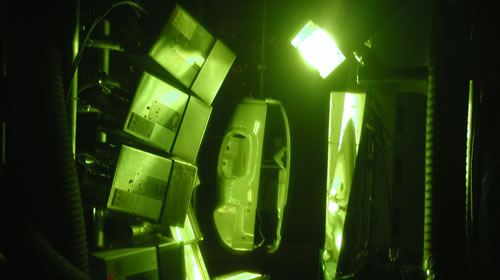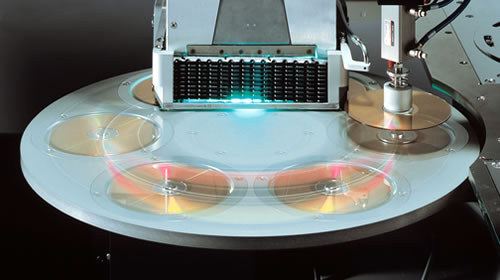
The UV Region is Divided into Four Parts:
Ultraviolet A (UVA 315-400nm) is used for low energy UV polymerization reactions in the bonding and curing of various materials, and is also used in non-destructive fluorescent inspection methods. Photons in the UVA (315-400 nm) promote through cure, especially with thicker film layers.
Ultraviolet B (UVB 280-315nm) is used along with UVA for polymerization and since it is the most energetic region of natural sunlight, for accelerated light aging of materials Photons in the UVB (280 - 315 nm) contribute to bulk cure.
Ultraviolet C (UVC 100-280nm) is used for rapid surface cure of UV inks and lacquers, and is also used in the sterilization and germicidal processes and applications, the most energetic of the wavelengths used in UV curing. Photons in the UVC are important for surface cure and promote surface properties such as hardness, stain resistance, and abrasion resistance.
Vacuum Ultraviolet (VUV 10-200nm) Vacuum UV can only be used in a vacuum, however, they have very significant commercial importance. As is well know from Moore's law, microelectronics can address smaller and smaller dimensions. Currently 193nm and 157nm are most important for making 65-30nm nodes. [Nitrogen does not strongly absorb VUV. Actually nitrogen is the most popular "purging gas" to prevent VUV being absorbed by oxygen.]
Although UV is classified as invisible light it is commonly referred to as "light" because it conforms to the optical rules of visible light. In the electromagnetic spectrum, UV is located in the higher frequency range than the visible band (see image below).

UV light curing is widely used in the assembly of micro-electronics, medical, fiber optic assembly and printing industries.
It is important that the spectral output (the intensity of light at each wavelength over the whole wavelength range emitted by the lamp), is matched with the absorption characteristics of the photoinitiator of the cure material.
Some important wavelength regions include 250nm (UVC range) which is associated with surface cure, 320 and 365nm (UVB and UVA range) where wavelengths greater than 350nm improve depth cure, and the range between 400 and 500nm (Visible light) which employs visible photoinitiators to absorb light and to provide even greater depth of cure.





